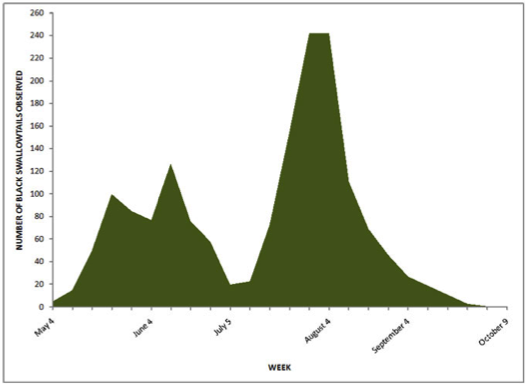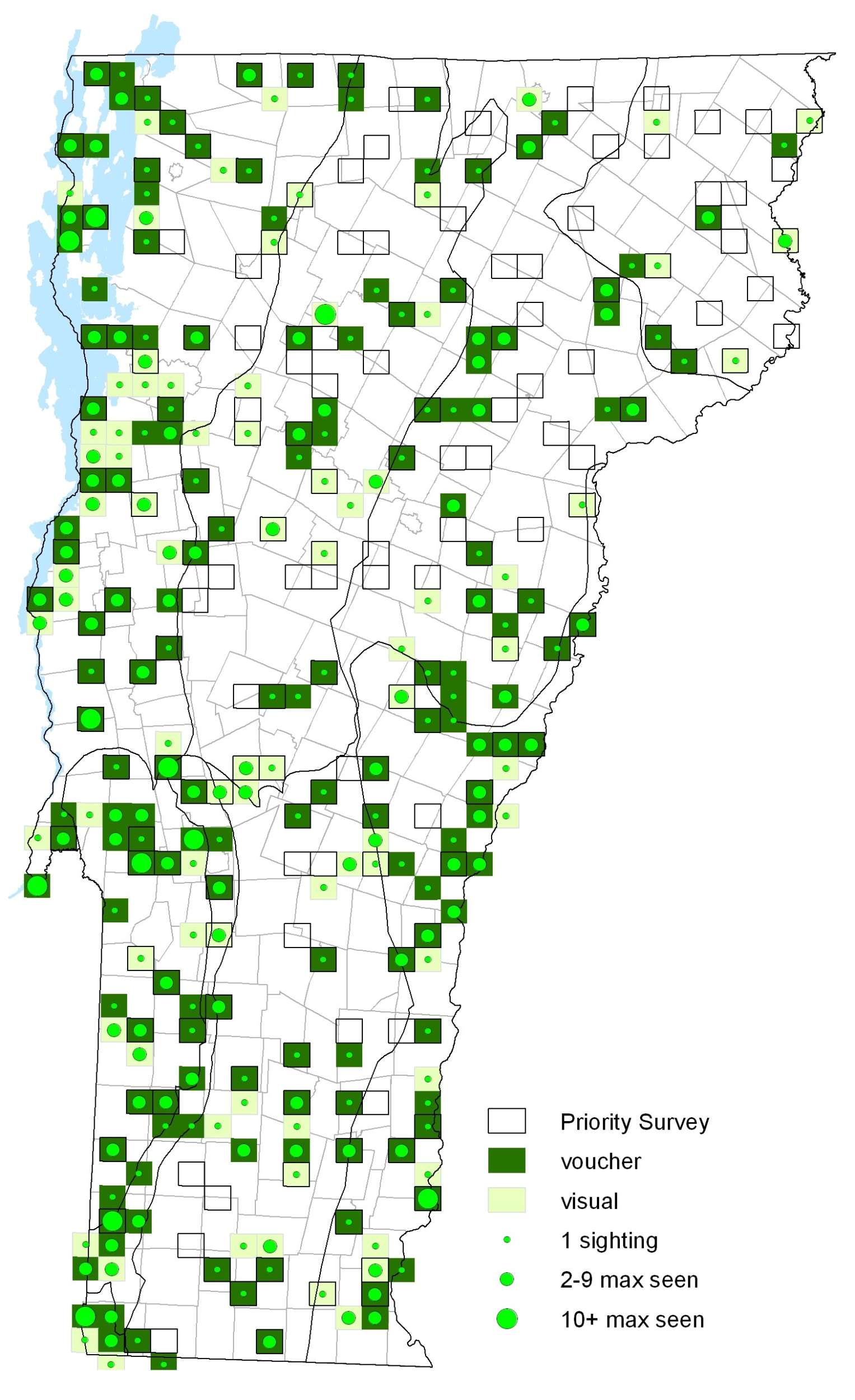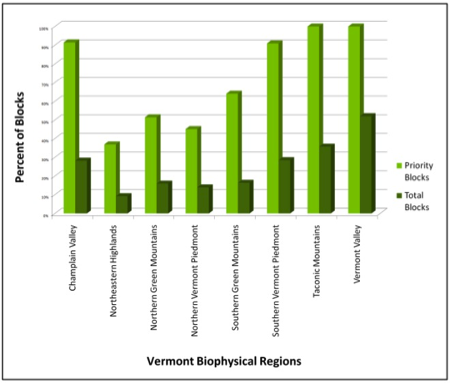Common and widespread throughout Vermont and because of their use of garden plants as hosts they are well known both as adults and caterpillars. The female Black Swallowtail is thought to be a mimic of the distasteful Pipevine Swallowtail.
Identification
A smaller Swallowtail with upperside of wings mostly black; on inner edge of hindwing is a black spot centered in larger orange spot. Male has yellow and near edge of wings; female has row of yellow spots. Female hindwing with iridescent blue band.
Conservation Status
Resident – Common
Vermont S5
Global G5
Flight
Reported to have one to two generations in the Northeast. In Vermont they appeared to have two that stretches for almost the entire growing season. Extreme dates: 1 May 2004 in West Haven (M. Elliot) and 9 October in Pownal (K. Hemeon).
Distribution and Habitat
North American range- Most of the eastern U.S., north into Quebec, west into s. Saskatchewan, Colorado and se. California; south to n. South America.
Found throughout the Northeast in a variety of open areas – fields, gardens, roadsides, pastures and throughout suburban areas. Larval hostplants are both wild and cultivated members of the Parsley family (Apiaceae). Adults nectar on an array of blooming flowers including milkweeds (Asclepias), thistles (Cirsium), and clovers (Trifolium).







